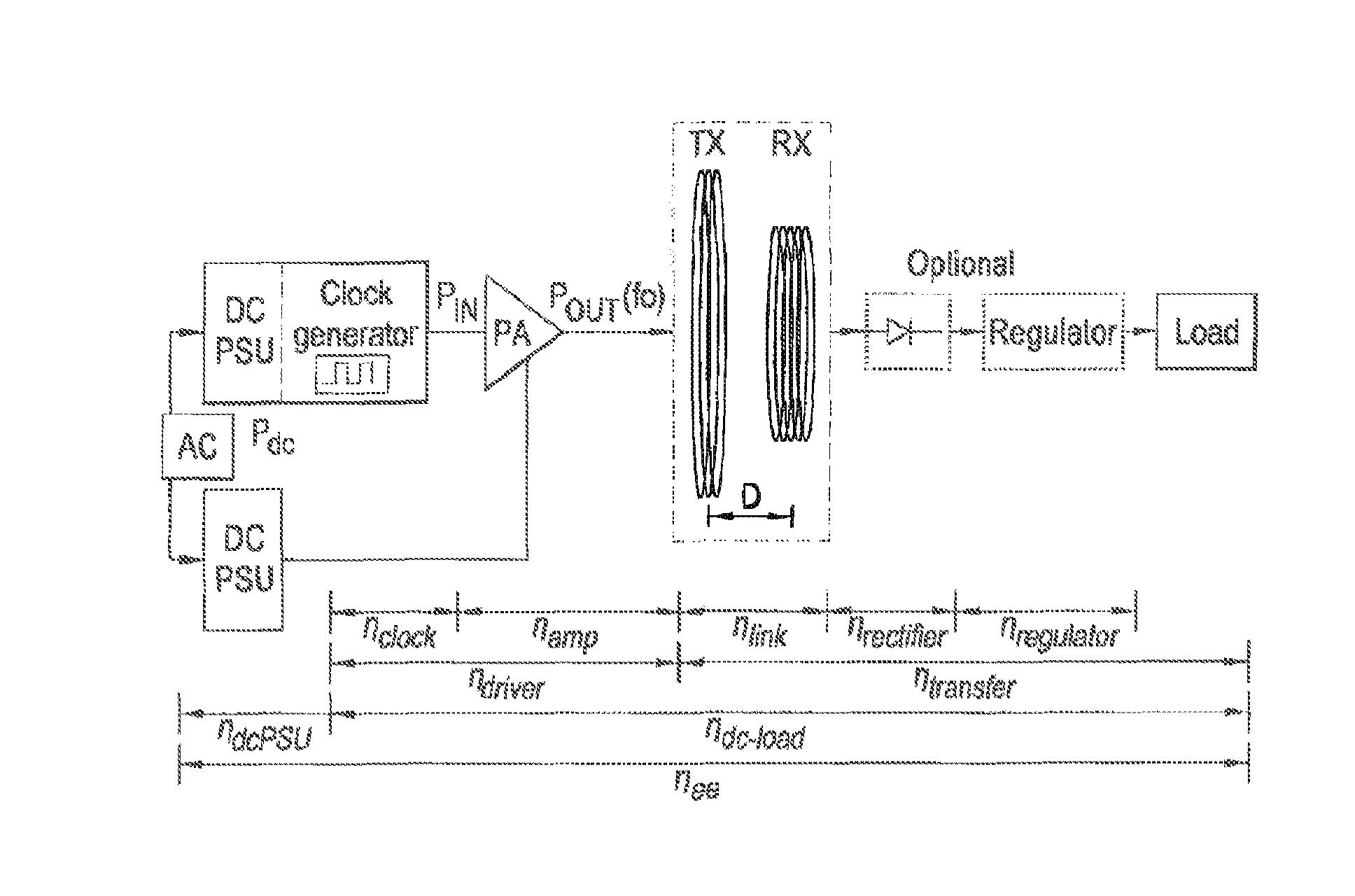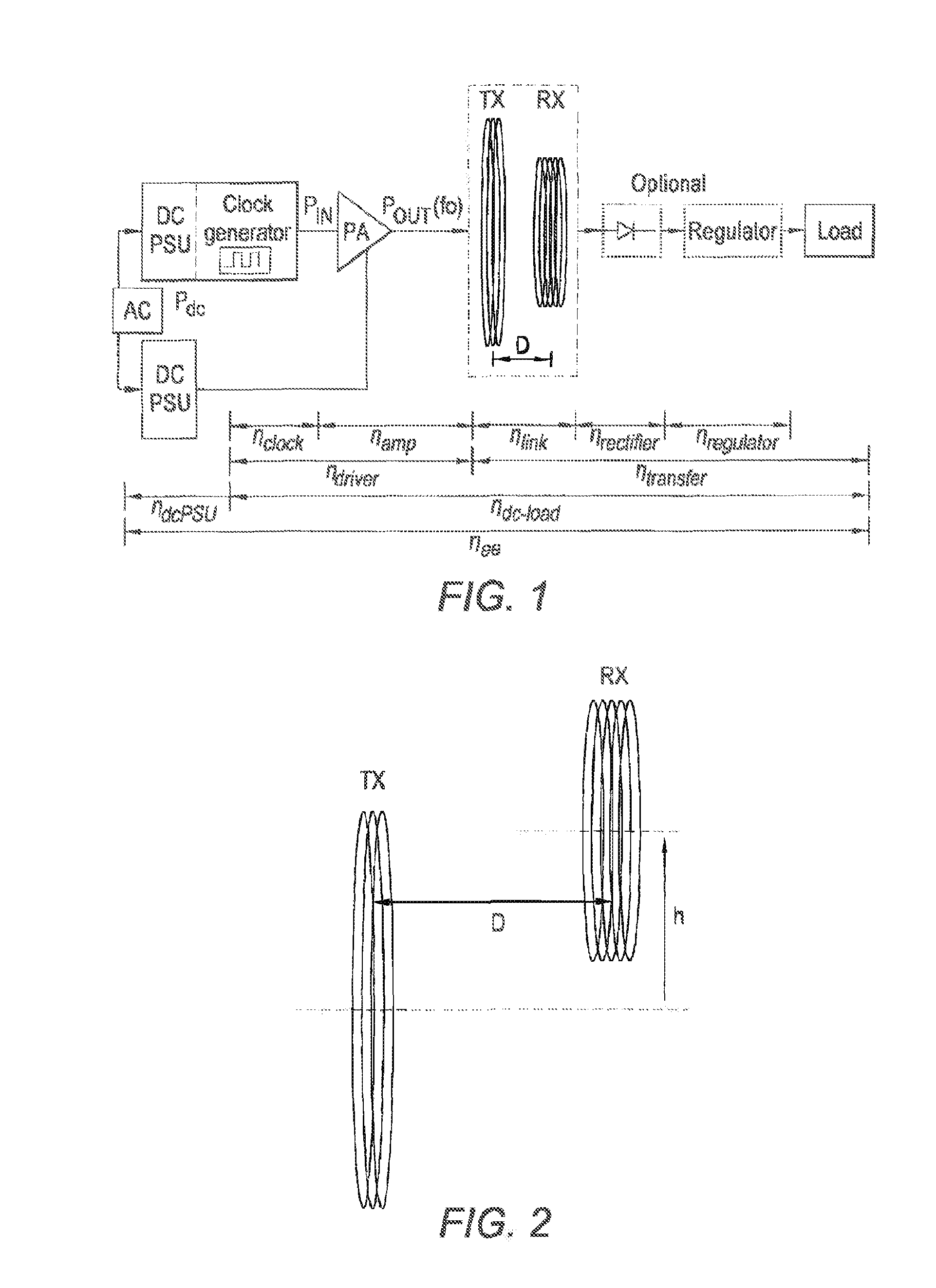Inductive Power Transfer System
a technology of inductive power transfer and inductive power, applied in the direction of transportation and packaging, efficient power electronics conversion, climate sustainability, etc., can solve the problems of occupying useful volume, requiring heavy materials, and employing expensive fabrication techniques
- Summary
- Abstract
- Description
- Claims
- Application Information
AI Technical Summary
Benefits of technology
Problems solved by technology
Method used
Image
Examples
Embodiment Construction
[0059]Inductive Power Transfer (IPT) systems for transmitting tens to hundreds of watts have been reported for almost a decade. Most of the work has concentrated on the optimization of the link efficiency and has not taken into account the efficiency of the driver. Class-E amplifiers have been identified as ideal drivers for IPT applications, but their power handling capability at tens of MHz has been a crucial limiting factor, since the load and inductor characteristics are set by the requirements of the resonant inductive system. The frequency limitation of the driver restricts the unloaded Q factor of the coils and thus the link efficiency. With a suitable driver, copper coil unloaded Q factors of over 1,000 can be achieved in the low MHz region, enabling a cost-effective high Q coil assembly. The system described herein alleviates the use of heavy and expensive field-shaping techniques by presenting an efficient IPT system capable of transmitting energy with a dc-to-load efficie...
PUM
 Login to View More
Login to View More Abstract
Description
Claims
Application Information
 Login to View More
Login to View More - R&D
- Intellectual Property
- Life Sciences
- Materials
- Tech Scout
- Unparalleled Data Quality
- Higher Quality Content
- 60% Fewer Hallucinations
Browse by: Latest US Patents, China's latest patents, Technical Efficacy Thesaurus, Application Domain, Technology Topic, Popular Technical Reports.
© 2025 PatSnap. All rights reserved.Legal|Privacy policy|Modern Slavery Act Transparency Statement|Sitemap|About US| Contact US: help@patsnap.com



